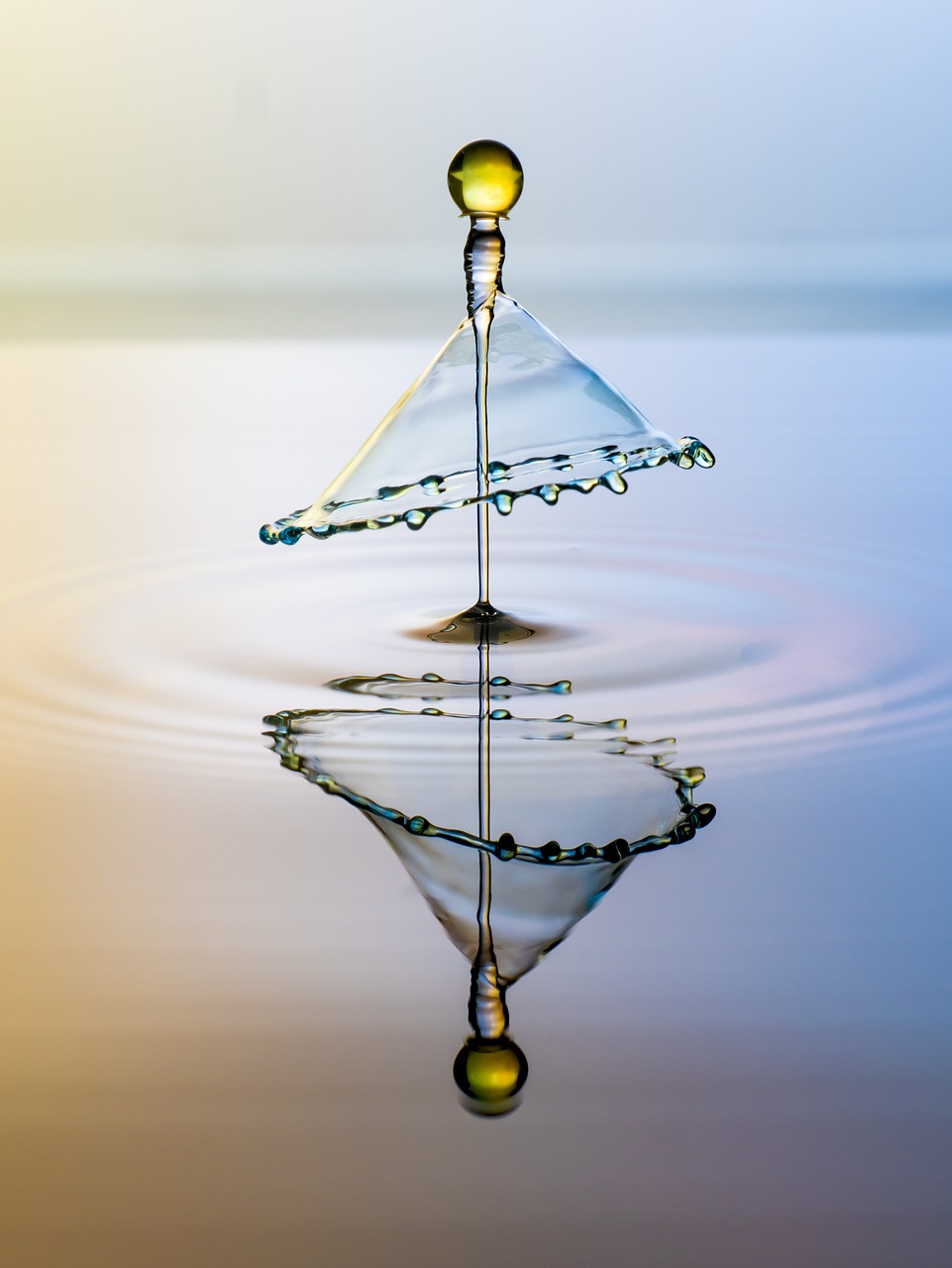Effective water conservation techniques and Ecological Consequences explained
Effective water conservation techniques, and more
Okay, here’s a more expository and expanded version of your “Great Basin Water Summary,” written for a wider audience (around a 7th-grade reading level) and aiming for clarity and explanation. I’ve broken it down into sections and used clear language. I’ve also incorporated the points about the Active Climate Rescue Initiative.
Great Basin Water Summary: A Delicate Balance
The Great Basin is a unique and fascinating place! It’s a huge area in the western United States, covering parts of Nevada, Utah, California, Oregon, and Idaho. What makes it special? Water. Unlike most places, water in the Great Basin stays in the Great Basin. This means that the water cycle here is very sensitive, and even small changes can have big consequences.
How Water Moves Around in the Great Basin
Think of the Great Basin like a giant bowl. Water flows into the bowl, but it doesn’t flow out to the ocean. So, how does water get into the Great Basin in the first place?
-
Rain and Snow: The main source of water is precipitation – rain and snow – that falls, especially in the mountains surrounding the basin. This water then flows downhill into rivers, streams, and valleys.
-
Underground Water: Some water also soaks into the ground, becoming groundwater. This underground water can feed springs and lakes, and it’s a vital resource for plants and animals.
Once the water is in the Great Basin, it can:
- Flow into Lakes and Wetlands: Many rivers and streams empty into lakes and wetlands. These areas are super important for wildlife.
- Evaporate: The hot, dry climate of the Great Basin means that a lot of water evaporates, turning into water vapor and rising into the air.
- Be Used by Plants and Animals: Plants absorb water through their roots, and animals drink water to survive.
- Soak into the Ground: Water seeps back into the ground to replenish the groundwater supply.
This constant movement and reuse of water is called the water cycle. Because the water doesn’t leave the Great Basin, any changes in the amount of water available – or how it’s used – can have a significant impact.
The Ecological Consequences: When Water is Scarce
When the Great Basin doesn’t get enough rain or snow, or when too much water is used, it can lead to water shortages. This has a big impact on the environment:
-
Dying Lakes and Wetlands: One of the most visible effects is the shrinking of lakes and wetlands. For example, the Great Salt Lake in Utah has been shrinking dramatically. This is a serious problem because millions of migratory birds rely on the Great Salt Lake as a crucial stopover point during their long journeys. When the lake shrinks, it reduces the birds’ food sources and habitat. Other wetlands face the same threat, impacting a wide range of plants and animals.
-
Stressed Ecosystems: Reduced water availability puts stress on entire ecosystems. Plants may struggle to survive, and animals that depend on those plants may also suffer. This can lead to a decline in biodiversity (the variety of life) and make the region more vulnerable to other environmental challenges.
-
Dust Storms: As lakebeds dry out, they become exposed to the wind. This can create huge dust storms that pollute the air, harm human health, and further damage the environment.
Climate Change and the Great Basin
Climate change is making the water situation in the Great Basin even worse. Rising temperatures lead to increased evaporation, and changes in precipitation patterns can result in less snowpack in the mountains. Less snowpack means less water flowing into rivers and lakes during the spring and summer months.
What Can Be Done?
The good news is that people are working to find solutions to the Great Basin’s water challenges.
-
Conservation: Using water more efficiently in agriculture, industry, and homes is crucial. This includes things like using water-saving irrigation techniques, fixing leaky pipes, and planting drought-resistant landscaping.
-
Water Management: Improving the way water is managed, including storing water during wet years and releasing it during dry years, can help to ensure a more reliable water supply.
-
Organizations like the Active Climate Rescue Initiative: Initiatives that are working to restore the basin’s water supply by addressing issues like inefficient irrigation and soil management.
-
Protecting Wetlands: Protecting and restoring wetlands can help to improve water quality, provide habitat for wildlife, and reduce the impacts of floods.
-
Addressing Climate Change: Taking steps to reduce greenhouse gas emissions is essential to slow down climate change and its impacts on the Great Basin’s water resources.
The Great Basin is a special place, and protecting its water resources is vital for the environment, the economy, and the people who live there. By working together, we can find solutions to ensure a sustainable water future for the Great Basin.
Okay, here’s a markdown version of the article you requested, geared towards a 7th-grade reading level, covering the Great Basin water cycle, water shortages, climate change impacts, and potential solutions. I’ve included the requested elements like the Active Climate Rescue Initiative link, HTML formatting, SEO optimization for specific keywords, and the omission of a traditional conclusion in favor of an expansive summary.
Is the Great Basin Drying Up? Understanding Our Water Crisis!
TL;DR (Too Long; Didn’t Read): The Great Basin, including Nevada and Las Vegas, is facing a big water problem! Water doesn’t flow out of this region, so we have to be extra careful. Climate change is making things worse, leading to less rain and snow. But there’s hope! We can save water by using less, farming smarter, and making better rules. Groups like the Active Climate Rescue Initiative are helping too!
Understanding the Great Basin’s Thirsty Cycle
The Great Basin is a huge area in the western United States. What makes it special? Unlike most places, water in the Great Basin doesn’t flow out to the ocean. Instead, it stays within the basin, often evaporating into the air, soaking into the ground, or collecting in lakes that eventually dry up. This means we have to be super careful with the water we have.
How Water Moves Around
Water enters the Great Basin mainly through:
- Rain and Snow: Precipitation falls in the mountains and valleys.
- Underground Water: Some water flows underground from other areas.
Then, water moves around by:
- Rivers and Streams: These carry water from the mountains to lower areas.
- Evaporation: The sun turns water into vapor, sending it back into the air.
- Plants: Plants take up water from the ground and release it into the air (transpiration).
- Groundwater: Water soaks into the ground, filling spaces in the soil and rock.
Nevada’s Water Woes
Nevada, especially cities like Las Vegas and surrounding farming areas, are really affected by the Great Basin’s water cycle. Las Vegas depends heavily on the Colorado River (which is outside the Great Basin but provides most of their drinking water) and on groundwater. Agriculture in the area also relies on limited water supplies. Because water isn’t being replenished, these resources are dwindling.
Climate Change: Making a Dry Situation Even Drier
Climate change is making the Great Basin’s water problems worse. Here’s how:
- Less Snowfall: Warmer temperatures mean less snow in the mountains. Snow acts like a natural reservoir, slowly releasing water during the spring and summer. Less snow means less water later on.
- Increased Evaporation: Hotter temperatures also mean more water evaporates from lakes, rivers, and soil.
- Droughts: Climate change can lead to longer and more severe droughts, further reducing water supplies.
The Ecological Consequences
When water becomes scarce, it has a big impact on the environment:
- Dying Lakes and Wetlands: Great Salt Lake is shrinking dramatically, and this affects the millions of migratory birds that depend on it. The loss of habitat and the dust storms caused by dry lakebeds threaten wildlife.
- Stressed Ecosystems: Plants and animals struggle to survive when there’s not enough water. This can lead to changes in the kinds of plants and animals that live in an area.
- Increased Wildfire Risk: Dry vegetation makes the region more prone to wildfires.
Solutions: Saving Water and Saving the Great Basin
Even though the situation is tough, there are things we can do!
Water Conservation at Home
- Use Less Water: Take shorter showers, fix leaky faucets, and only run the dishwasher and washing machine when they’re full.
- Water-Wise Landscaping: Use plants that don’t need much water (like native desert plants).
- Reduce your lawn size Use xeriscaping practices
Smarter Farming
- Efficient Irrigation: Use techniques like drip irrigation, which delivers water directly to plant roots, to reduce water waste.
- Grow Drought-Tolerant Crops: Plant crops that don’t need as much water.
- Monitor Soil Moisture: Using sensors to monitor soil moisture and only irrigate when necessary.
Policies that Help
- Water Restrictions: Implement rules about how much water people can use.
- Incentives for Conservation: Offer rebates or tax breaks to people who save water.
- Water Trading: Allow water users to buy and sell water rights, encouraging more efficient use.
The Active Climate Rescue Initiative
Organizations like the Active Climate Rescue Initiative are working to tackle the Great Basin’s water supply shortages. They might be developing new technologies, supporting conservation efforts, or advocating for policy changes. It’s important to research these groups and support their work!
Great Basin Water Summary
Water in the Great Basin stays in the Great Basin, creating a very sensitive water cycle. Nevada, especially Las Vegas and its farming areas, relies heavily on this water, but climate change is making the whole system struggle. We’re seeing less snow, more evaporation, and longer droughts, which hurts both nature and people. Fortunately, there are ways to fight back! By using less water at home, making farming smarter, and creating better water policies, we can make a real difference. Plus, groups like the Active Climate Rescue Initiative are helping to find new solutions and support conservation. Working together, we can help the Great Basin thrive, even in the face of climate change. It all comes down to understanding how precious water is in this unique region and acting responsibly to protect it.
More on Effective water conservation techniques…
- Okay, here’s an exhaustive list of SEO keywords related to ‘Effective Water Conservation Techniques’ and/or ‘Ecological Consequences’ (one per line):
- Water Conservation Techniques
- Effective Water Conservation
- Water Conservation Methods
- Water Saving Tips
- Water Management Strategies
- Reducing Water Consumption
- Water Conservation at Home
- Water Conservation in Agriculture
- Water Conservation in Industry
- Water Conservation in Cities
- Rainwater Harvesting
- Greywater Recycling
- Drought Resistant Landscaping
- Xeriscaping
- Efficient Irrigation Techniques
- Low-Flow Fixtures
- Water Audit
- Leak Detection
- Water Conservation Education
- Water Conservation Awareness
- Ecological Consequences of Water Scarcity
- Environmental Impacts of Water Use
- Water Depletion Effects
- River Degradation
- Wetland Loss
- Groundwater Depletion
- Ecosystem Damage from Water Use
- Habitat Loss Due to Water Scarcity
- Biodiversity Loss Water
- Water Pollution Impacts
- Climate Change and Water Resources
- Desertification
- Soil Erosion Water
- Salinization
- Water Stress
- Water Crisis
- Sustainable Water Management
- Water Resource Management
- Water Security
- Conserving Water Resources
- Protecting Water Resources
- Water Footprint
- Virtual Water
- Water Conservation Benefits
- Environmental Benefits of Water Conservation
- Economic Benefits of Water Conservation
- Water Conservation Rebates
- Water Conservation Programs
- Water Conservation Policies
- Water Conservation Laws
- Agricultural Water Management
- Industrial Water Management
- Urban Water Management
- Domestic Water Use
- Commercial Water Use
- Water Usage Reduction
- Conserving Water in the Garden
- Sustainable Landscaping
- Permaculture Water
- Water Wise Gardening
- Drought Tolerant Plants
- Efficient Water Use in Agriculture
- Drip Irrigation
- Sprinkler System Efficiency
- Water Saving Appliances
- Low Flow Toilets
- Low Flow Showerheads
- Water Recycling
- Wastewater Treatment
- Water Reclamation
- Brackish Water
- Desalination Environmental Impact
- Ecological Impact of Dams
- River Ecosystems
- Aquatic Ecosystems
- Riparian Zones
- Watershed Management
- Groundwater Recharge
- Water Table Decline
- Water Quality Degradation
- Impact of Pollution on Water Resources
- Algal Blooms
- Dead Zones
- Waterborne Diseases
- Water Sanitation
- Human Impact on Water Resources
- Water Conservation for Future Generations
- Water Stewardship
- Community Water Conservation
- Local Water Conservation
- Regional Water Conservation
- National Water Conservation
- Global Water Conservation
- Water Conservation Tips for Kids
- Water Conservation Activities
- Preventing Water Waste
- Reduce Reuse Recycle Water
- Water Conservation Challenges
- Water Conservation Barriers
- Water Conservation Success Stories
- Sustainable Water Use
- Water Governance
- Water Pricing
- Water Rights
- Water Conflicts
- Water Wars
- Transboundary Water Management
- International Water Agreements
- Water Scarcity Solutions
- Addressing Water Scarcity
- Managing Water Demand
- Enhancing Water Supply
- Climate Resilient Water Management
- Ecological Restoration Water
- Restoring Water Ecosystems
- Water Conservation and Climate Change Mitigation
- Sustainable Agriculture
- regenerative agriculture Water
- water sensitive urban design
- WSUD
- Best Management Practices Water
- BMPs Water
- Water-wise Landscaping
- Irrigation Management
- Soil Moisture Monitoring
- Evapotranspiration
- Water Audit Checklist
- Water Conservation Plan
- Green Infrastructure Water
- Low Impact Development Water
- LID
- Stormwater Management
- Water Sensitive Cities
- Community Engagement Water
- Public Awareness Campaigns Water
- Behavioral Changes Water Conservation
- Smart Water Management
- Internet of Things Water
- IoT Water
- Water Metering
- Water Leak Detection Systems
- Non-Revenue Water
- Water Loss Reduction
- Climate Variability Water
- Water Forecasting
- Water Resources Modeling
- Hydrological Modeling
- Ecosystem Services Water
- Valuing Water
- Water Economics
- Circular Economy Water
- Water Reuse Regulations
- Water Efficiency Standards
- Environmental Flows
- Water Quality Monitoring
- Water Treatment Technologies
- Decentralized Water Systems
- Source Water Protection
- Watershed Health
- Aquatic Life
- Fishing Industry Impacts Water
- Recreational Water Use Impacts
- Tourism Water
- Hydropower Environmental Impacts
- Dam Removal
- Water Infrastructure
- Aging Water Infrastructure
- Water Innovation
- Water Technology
- Water Research
- Water Grants
- Water Funding
- Water Investment
- Water Companies
- Water Utilities
- Water Experts
- Water Professionals
- Water Consultants
- Water Management Companies
- Water Conservation Organizations
- Water Advocacy Groups
- World Water Day
- Water Education Resources
- Save Water
- Every Drop Counts
- Think Water
- Value Water
- Act Local Think Global Water
- Water is Life
- Sustainable Future Water
- Protect Our Water
- Conserve for Tomorrow
- Water Action
- Water Positive
- Net Zero Water
- Climate Action Water
- Sustainable Development Water
- Environmental Sustainability Water
- This list aims to be exhaustive and covers a wide range of related topics. You can further refine it based on your specific needs and target audience. Remember to consider long-tail keywords and question-based queries in your SEO strategy.




